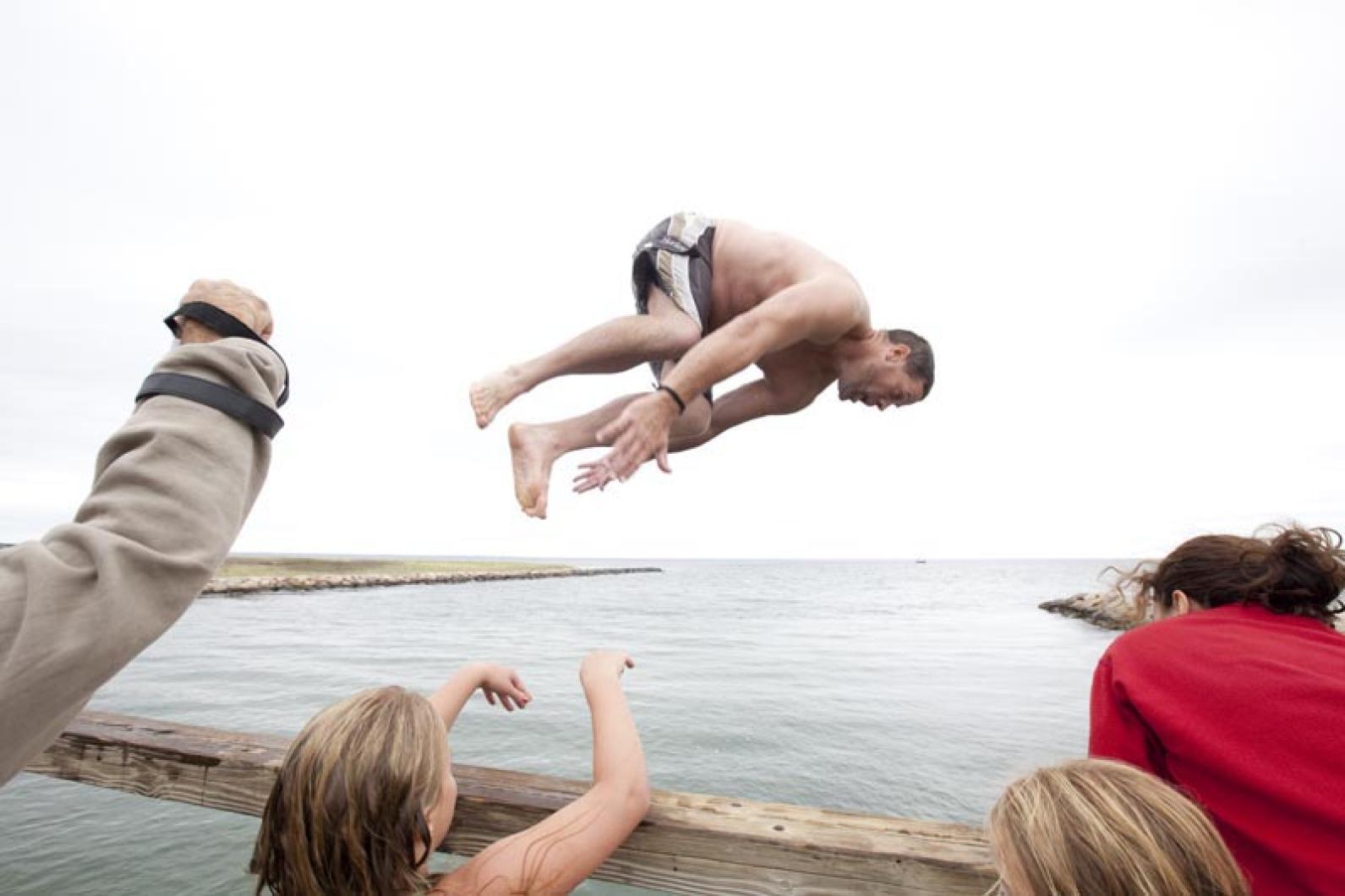Although it was completed and opened to motorists just last week, the new Big Bridge spanning Oak Bluffs and Edgartown at Joseph Sylvia State Beach has already caused concern among county officials, who worry the back railing of the wooden platform is too close to Beach Road, leaving pedestrians and sunbathers at risk of injury by oncoming traffic this summer.
The $15 million project to replace both the Big Bridge and Little Bridge, sponsored by the state Department of Transportation, is now halfway complete. Last week work crews from the Acton-based construction firm MIG finished the westbound lanes of both bridges, after eight months of construction that began in September.
Among other things, construction on the two bridges — formally named VFW Memorial Bridge (the small bridge on the Oak Bluffs end) and American Legion Memorial Bridge (the larger bridge that sits on the Oak Bluffs-Edgartown town line) — required the use of portable stop lights throughout the winter.
Construction work has halted on both bridges until this fall, when workers from MIG will return to finish the lanes heading into Edgartown.
Meanwhile, the oncoming lane of traffic is only about three inches away from the back railing of the platform. The railing is also low, about two and a half feet off the ground, the same height as most passing cars.
“It’s a recipe for trouble,” said Dukes County manager Russell Smith. “If we don’t make a change, I worry someone might get hurt. Anyone sitting on that railing — and there will be lots of people sitting there this summer — can easily get clipped by a passing car.”
“Considering all the young people who will be hanging out down there this summer, you have to be concerned,” agreed county commissioner Melinda Loberg. “I personally would like to see some sort of change in the name of safety.”
Mr. Smith believes a new railing is needed to give bridge-sitters more separation from the road. He said a temporary solution is needed only for this summer, because there will eventually be a breakdown lane between the railing and traffic once the bridge is completed next spring.
“It’s not rocket science. When both sides of the bridge are completed there will be wide berth between the people and the cars. But that won’t happen until next summer. We need to make some adjustments for this summer to prevent anyone from getting hurt,” he said.
On May 21 he sent a letter to Bernard McCourt, District 5 highway director for the state, and department of transportation engineer John Raposa, laying out his concerns. “It is my regret, at this late date, to bring a serious safety issue to your attention regarding the construction of the Big Bridge between Oak Bluffs and Edgartown,” he wrote, adding:
“My concern is the lack of an adequate pedestrian/road barrier on the ocean side of this bridge . . . this one sidewalk has many kids . . . all summer long jostling each other and hanging out. We need to prevent someone from falling over the new existing 18-inch barrier into the roadway.”
Mr. Smith attached a sketch of a possible solution: a five-foot wooden railing built along the side of the road, with a piece of plywood at the top to discourage people from sitting on it. “This is one idea and any similar design that can be quickly and inexpensively installed will be fine with me,” he wrote.
He said state officials responded almost immediately, and agreed changes were needed. But there is red tape. “There is a certain bureaucratic rigmarole they must go through with any construction, or changes to a project, that have to do with funding and timing,” he said.
He said the state came back with a proposal to build a new railing at a cost of $110,000.
But to move the plan forward, the state must come up with the funding, which it does not immediately have, and order lumber, which will take about 10 weeks. “That’s not going to work. We need something now, not 10 weeks from now,” Mr. Smith said.
Only the state contractor for the project can do the work.
Meanwhile, Mr. Smith said he spoke with another engineer who works with the state about a different approach.
“I think the state was careful about being inclusive when they designed this bridge. They talked to a lot of people to make sure it was done right. So they are reluctant to green-light a plan that will change things. It might be best to get something temporary up this summer, to make sure nobody gets hurt, and then sit down and talk about a permanent solution in the fall,” he said.







Comments (2)
Comments
Comment policy »